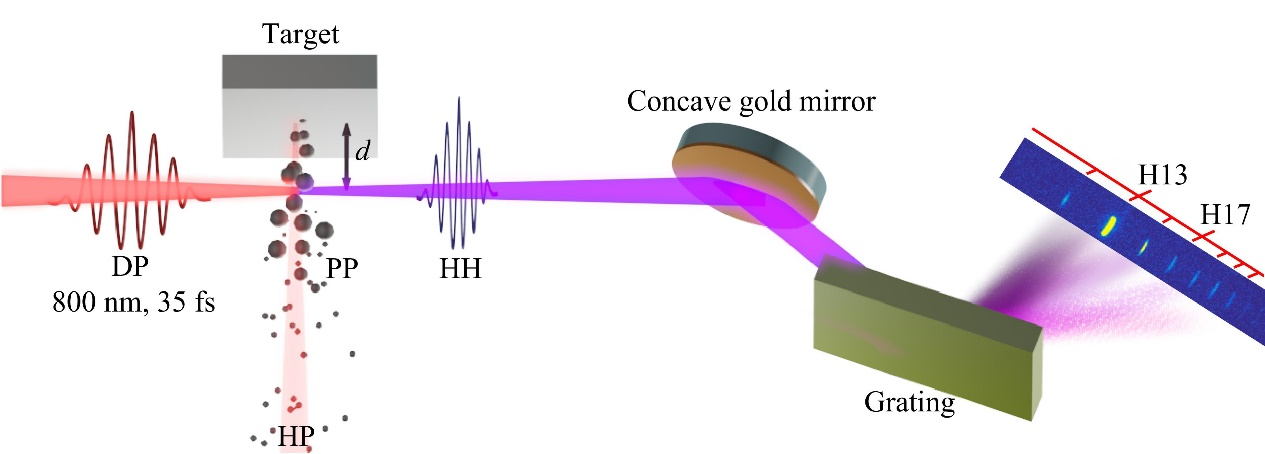Author: |
Editor: LIANG Jingguang | Oct 25, 2021
A popular media for high-order harmonic generation (HHG), nanoparticles are combine the low average density of gases and local high density of solids, which could be beneficial for harmonic conversion efficiency. Until now, the best way to form nanoparticles with low spatial density distribution is in the way of laser ablation plume from prefabricated nanoparticles.
The specific process of this method is firstly ablating the sample with a relatively low intensity ablation pulse to produce a particle plume, and then the driving pulse interacts with the plume to generate high-order harmonics. However, under the ablation intensity (~10^10 W/cm2), the nanoparticles will unavoidably decompose. Therefore, it is important to understand the specific contribution of particles in the ablation plume. An overall study of the ablation plume will help to solve this problem.
In a study published in Optics Express, a research group led by Prof. Li Wei and Dr. Lai Yu Hang of the GPL Photonics Laboratory systematically studied HHG from laser ablation plume to emphasize the contribution of nanoparticle and monomer in the plume to HHG. This research group is based in the Changchun Institute of Optics, Fine Mechanics and Physics (CIOMP) of the Chinese Academy of Sciences.
Taking indium as the experimental sample, the characteristics of single-order resonance enhancement can be used to show the difference of HHG from different particles more clearly. Experiments on the relationship between the harmonic signal and the lateral distance between the driving pulse and the sample surface were carried out with solid indium and indium nanoparticles compressed sample, respectively.
Results show that, different from single type of result from solid ablation, two distinct harmonic spectra are obtained from the plume ablated from nanoparticle samples: with a small lateral distance, the resonance enhancement disappears, while it gradually revives if the lateral distance is increased.
Through the experimental results obtained from two delays, it is estimated that the velocities of the two groups are 670 m/s and 4000 m/s, respectively, which are similar to the velocities of nanoparticles and monomers produced by laser ablation.
The disappearance of resonance enhancement is considered to be caused by the lack of ions. Next, they give two more evidences to prove that the species in the slow group are mainly nanoparticles. Firstly they carry out experiments at a near distance with much higher driving intensity, which was calculated that this will cause the complete ionization of single neutral indium atoms, while the featureless spectra excludes the possibility of being dominated by neutral monomers. Then, they estimate the particle density by measuring the attenuation of driving pulse, and the variation of density estimation with distance is in accordance with non-resonant harmonic with distance.
The two harmonic features indicate that at least two kinds of particles are contained in the same plume produced by ablating the nanoparticle sample, which demonstrates the necessity of precise selection of the region of laser-plume interaction in HHG experiment.

Fig. 1. Schematic setup diagrams.
(HP: heating pulse; DP: driving pulse; d: distance between target surface and DP; PP: plasma plume; HH: high-harmonics)
Auther: LIANG Jingguang
Changchun Institute of Optics, Fine Mechanics and Physics, Chinese Academy of Sciences
Changchun, Jilin 130033, China
E-mail: liangjingguang16@mails.ucas.edu.cn
Article links: https://www.osapublishing.org/oe/fulltext.cfm?uri=oe-29-15-23421&id=453173
